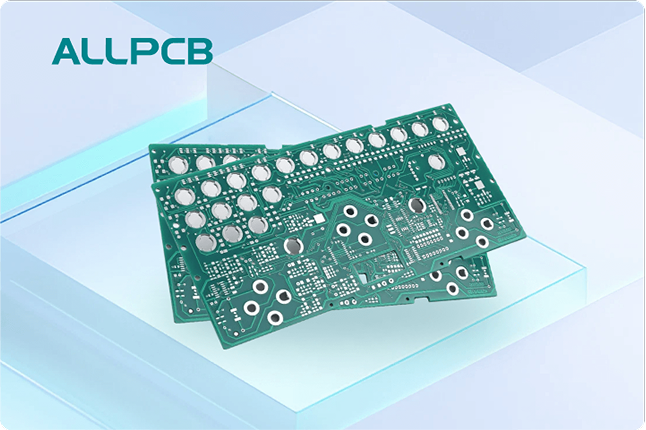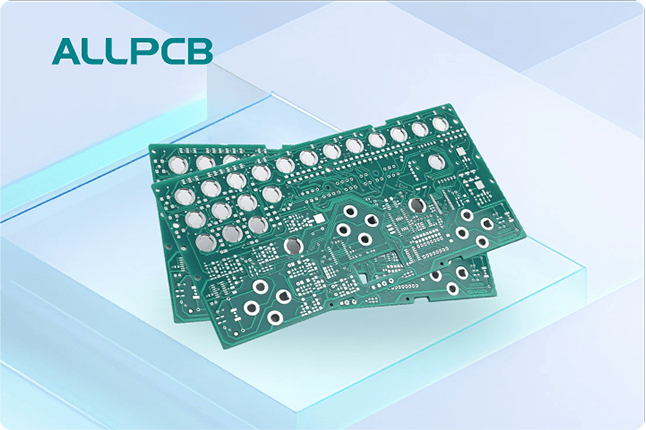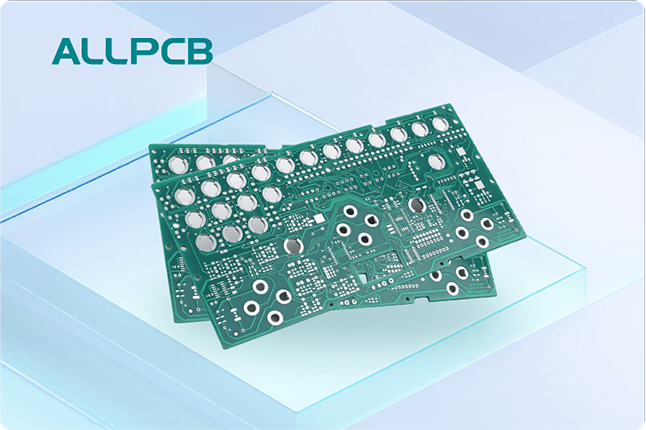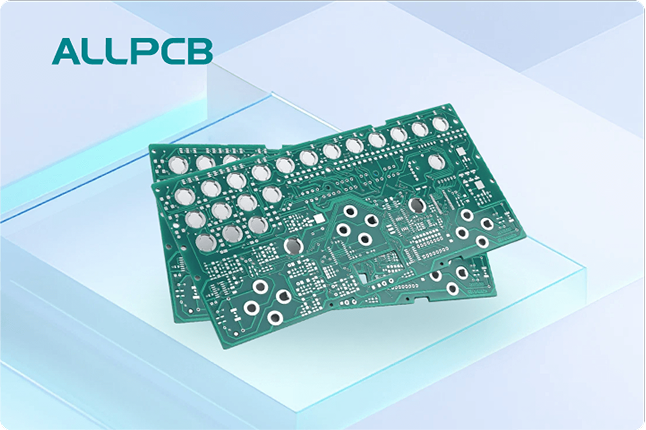In the high-stakes world of military and aerospace applications, the need for reliable PCBs, adaptable PCB electronics, and upgradeable PCB aerospace solutions is non-negotiable. These industries demand electronics that can withstand extreme conditions, adapt to evolving mission requirements, and be upgraded without costly overhauls. At ALLPCB, we understand these challenges and are committed to providing cutting-edge solutions in electronics manufacturing that meet the stringent standards of these critical sectors. In this comprehensive guide, we'll explore why reliability, adaptability, and upgradeability are essential for PCBs in military and aerospace, and how advanced manufacturing techniques can deliver on these needs.
Why Reliable PCBs Are Critical for Military and Aerospace
In military and aerospace environments, failure is not an option. Whether it's a communication system on a fighter jet or a control module in a satellite, PCBs must perform flawlessly under extreme conditions. Reliable PCBs are the backbone of these systems, ensuring consistent operation in the face of high temperatures, vibrations, and radiation.
Consider the harsh realities of these applications: temperatures can swing from -55°C to 125°C, vibrations can reach up to 20G, and radiation levels in space can degrade standard electronics over time. A reliable PCB must be designed with materials like high-Tg FR-4 or polyimide, which offer thermal stability and mechanical strength. For instance, a PCB with a glass transition temperature (Tg) of 170°C or higher can maintain structural integrity in extreme heat, preventing delamination or warping.
Moreover, reliability extends to signal integrity. In military radar systems, for example, signal speeds must be maintained with minimal loss, often requiring impedance control within ±10% tolerance. This precision ensures that critical data isn't compromised during transmission, a non-negotiable factor in mission-critical scenarios.

The Role of Adaptable PCB Electronics in Dynamic Missions
Military and aerospace missions are rarely static. Equipment must adapt to new threats, environments, and technologies. This is where adaptable PCB electronics come into play, allowing systems to be reconfigured or repurposed without requiring a complete redesign.
Adaptability in PCB design often means modular architectures. For example, a drone used for reconnaissance might need to switch between thermal imaging and high-resolution cameras depending on the mission. A modular PCB with standardized connectors, such as MIL-DTL-38999 series, can enable quick swaps of components without soldering or extensive rework. This not only saves time but also reduces the risk of damage during field operations.
Another aspect of adaptability is the ability to handle varying power requirements. In aerospace applications, power systems might need to support voltages ranging from 5V for sensors to 28V for actuators. PCBs with flexible power distribution layers can accommodate these variations, ensuring seamless operation across diverse systems. By incorporating features like programmable logic devices (PLDs), these boards can also be reconfigured via software to meet new operational needs, further enhancing their adaptability.

Upgradeable PCB Aerospace Solutions for Future-Proofing
Technology evolves rapidly, and military and aerospace systems must keep pace. An upgradeable PCB aerospace design ensures that equipment can integrate new capabilities without requiring a full replacement, saving both time and cost in the long run.
One key strategy for upgradeability is the use of surface-mount technology (SMT) with accessible component layouts. For instance, a flight control system PCB might need to upgrade its microcontroller to a faster model with a clock speed of 200 MHz from an older 100 MHz version. If the board is designed with SMT pads and sufficient clearance, technicians can replace the component without redesigning the entire circuit. This approach minimizes downtime and maintains the system's operational readiness.
Additionally, incorporating firmware update capabilities through onboard flash memory or external interfaces like USB or Ethernet allows for software-based upgrades. In a satellite system, for example, a PCB might need updated algorithms to improve navigation accuracy. With an upgradeable design, these updates can be uploaded remotely, avoiding the need for physical access to the hardware.
Upgradeability also ties into scalability. A well-designed PCB can support additional layers or stackable modules, allowing for future expansions. For instance, adding a new communication protocol like 5G for military drones can be achieved by integrating a compatible module onto an existing PCB, provided the original design anticipated such needs with reserved space and power capacity.

Electronics Manufacturing: Meeting Military and Aerospace Standards
Creating PCBs for military and aerospace applications requires precision and adherence to strict standards in electronics manufacturing. These industries often follow guidelines like MIL-PRF-31032 for military PCBs and AS9100 for aerospace quality management systems, ensuring that every board meets rigorous performance and safety criteria.
One critical aspect of manufacturing is material selection. High-reliability applications often require substrates with low dielectric constants (Dk) around 3.5 to 4.5 to minimize signal loss at high frequencies, such as those used in radar systems operating at 10 GHz or higher. Additionally, copper thickness must be carefully controlled—typically 1 oz to 2 oz per square foot—to balance conductivity and heat dissipation without adding unnecessary weight, a crucial factor in aerospace designs.
Manufacturing processes also need to account for environmental testing. PCBs destined for military use might undergo thermal cycling tests between -65°C and 150°C to simulate operational extremes. Similarly, vibration testing at frequencies up to 2000 Hz ensures durability in high-stress environments like helicopter avionics. Only through such rigorous testing can manufacturers guarantee the reliability demanded by these sectors.
Advanced fabrication techniques, such as HDI (High-Density Interconnect) technology, are also vital. HDI allows for finer trace widths (down to 3 mils) and smaller vias (as small as 0.1 mm), packing more functionality into compact boards. This is especially important for wearable military devices or miniaturized satellite systems where space is at a premium.
Challenges in Designing and Manufacturing PCBs for Harsh Environments
Designing and manufacturing PCBs for military and aerospace applications come with unique challenges. Beyond the environmental extremes already mentioned, factors like electromagnetic interference (EMI) and long-term durability must be addressed.
EMI is a significant concern in densely packed avionics systems where multiple high-frequency signals operate simultaneously. Shielding techniques, such as incorporating ground planes or using conductive coatings, can reduce interference. For example, maintaining a ground plane separation of 0.5 mm from signal traces can effectively minimize crosstalk in boards operating at frequencies above 1 GHz.
Long-term durability is another hurdle. Aerospace PCBs in satellites might need to function for 15 years or more in the vacuum of space, exposed to cosmic radiation. Using radiation-hardened components and conformal coatings can protect against degradation, extending the lifespan of the board. These coatings, often silicone-based, create a barrier against moisture and contaminants, which is also beneficial for military equipment used in humid or dusty environments.
How ALLPCB Supports Military and Aerospace Needs
At ALLPCB, we specialize in delivering reliable PCBs, adaptable PCB electronics, and upgradeable PCB aerospace solutions tailored to the unique demands of military and aerospace applications. Our state-of-the-art electronics manufacturing processes adhere to the highest industry standards, ensuring that every board we produce can withstand the toughest conditions and meet evolving requirements.
We offer customized design support to incorporate features like modular layouts and HDI technology, making adaptability and upgradeability a core part of our offerings. Our rigorous quality control includes environmental stress testing and precise impedance matching, guaranteeing reliability in every project. Whether you're developing avionics for a commercial aircraft or control systems for military vehicles, our team is equipped to provide the expertise and technology needed for success.
Future Trends in Military and Aerospace PCB Technology
The future of PCB technology in military and aerospace is exciting, with innovations poised to enhance reliability, adaptability, and upgradeability even further. One emerging trend is the integration of embedded components, where resistors and capacitors are built directly into the PCB layers. This reduces size and weight—critical for aerospace—and improves reliability by minimizing external connections that could fail under vibration.
Another trend is the adoption of advanced materials like graphene-based substrates, which offer superior thermal conductivity (up to 5000 W/m·K compared to copper's 400 W/m·K). This can significantly improve heat management in high-power military systems. Additionally, the rise of additive manufacturing, or 3D printing of PCBs, holds promise for rapid prototyping and on-site production, potentially revolutionizing how military units maintain equipment in remote locations.
Lastly, the push for autonomous systems in both sectors will drive demand for smarter PCBs with integrated AI capabilities. These boards will need to process data at speeds exceeding 10 Gbps, requiring advanced signal integrity designs and low-latency materials to keep up with real-time decision-making in drones and unmanned vehicles.
Conclusion: Building the Future with Reliable, Adaptable, and Upgradeable PCBs
In the demanding fields of military and aerospace, reliable PCBs, adaptable PCB electronics, and upgradeable PCB aerospace designs are essential for success. These qualities ensure that critical systems can endure harsh conditions, adapt to changing needs, and evolve with technological advancements. Through precision electronics manufacturing, ALLPCB is dedicated to supporting these industries with high-quality, customized solutions that meet the toughest standards.
By focusing on robust materials, modular designs, and forward-thinking manufacturing techniques, we help engineers and innovators build systems that are ready for today and prepared for tomorrow. Trust ALLPCB to be your partner in creating the next generation of military and aerospace electronics.
 ALLPCB
ALLPCB







